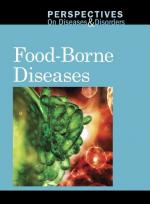|
This section contains 5,320 words (approx. 18 pages at 300 words per page) |

|
Susanne L. Huttner
About the author: Susanne L. Huttner is the director of the University of California Systemwide Biotechnology Research and Education Program.
Biotechnology, the use of living organisms to make or modify products, benefits food safety and quality in a variety of ways. For example, scientists have developed antibodies that target food contaminants. Biotechnology techniques improve the quality of crops and livestock by reducing the damaging effects of viruses and bacteria and by enhancing taste and nutrition. Because these techniques have been proven safe, biotechnology foods do not require labeling or premarket testing.
New biotechnology techniques hold real promise for American agriculture and for consumers in at least six important ways, some of which are discussed in more detail below:
1. Biotechnology can improve the quality—e.g., the flavor, nutritional value or...
|
This section contains 5,320 words (approx. 18 pages at 300 words per page) |

|




